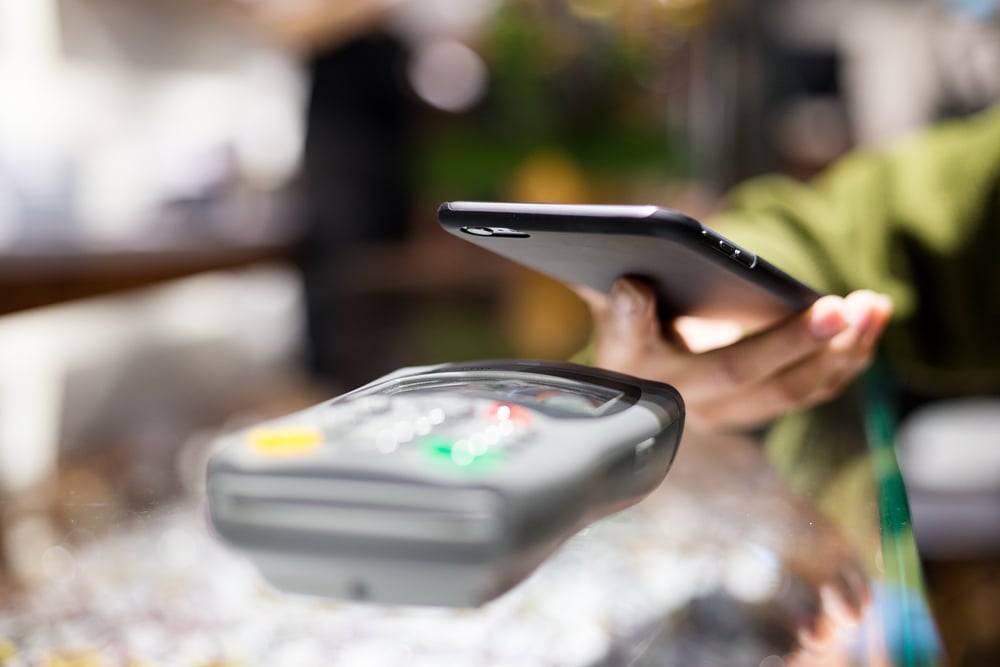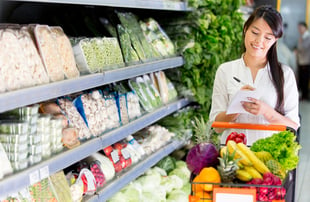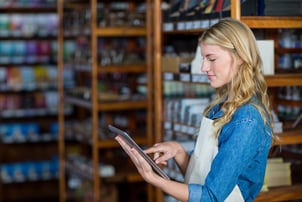6 Ways to Implement Self-Checkout Right

Finding ways to streamline operations and enhance customer experiences is crucial for success in retail. One technology that has made a significant impact in recent years is self-checkout systems. These automated assistants have revolutionized the checkout process, offering numerous benefits to retailers and customers alike.
By leveraging self-checkout technology effectively, retailers can boost employee productivity, reduce costs, and provide a seamless shopping experience that aligns with the growing demand for contactless services.
In the US, 79% of consumers intend to continue or increase their usage of self-checkouts in retail beyond the pandemic, according to a report by McKinsey.
But simply self-checkout implementation doesn’t guarantee success. If you implement self-checkout in the wrong way, you could do more harm than good – at best, customers won’t use them, and at worst, they may take their business to your competitors.
With the rise of autonomous stores and checkout-less shopping, the expectations for automated shopping experiences have evolved. To ensure your self-checkout machines deliver the benefits you expect, consider the latest trends and technologies. Here are six key points and real-world examples from companies pushing the boundaries of exceptional automated shopping experiences.
Giving customers a self-checkout option is one thing, but it’s not nearly as important as providing a good self-checkout option. According to a report by Raydiant, 25% of consumers revealed they would choose not to use self-service checkouts because they’ve had bad experiences, and 67% reported at least one fail while using them.
In this blog post, we will outline six valuable tips to successfully implement self-checkout systems for optimal results.
1. Design, design, design
Whether you’re starting from scratch or looking to make improvements to an existing self-checkout software, design is critical. It’s worth investing the time to get it right from the beginning. To maximize the self-checkout system, customer satisfaction, and ultimately revenue, the goal is to understand the customer journey from entry to exit and remove points of friction. Design thinking and a human-centered approach can help with this.
Prototyping
Start by developing a full understanding of what shoppers prefer and what are their pain points, and use data analysis and customer journey mapping to enrich your assessment. Then design a prototype and test your ideas to eliminate any possible friction before investing in a solution. In the context of maximizing self-checkout system, this could involve:
- Using point-of-sale data to model various checkout scenarios
- Observing and interviewing customers
- Testing prototypes based on the research findings.
Once you’ve uncovered exactly how a self-checkout system can address your customers’ pain points, you can design a solution tailored to their needs. Product Design Sprints are a good way to do this quickly and effectively.
2. Use data to optimize customer experience and increase adoption
Whichever way you approach the design phase, remember that it should be an iterative process:
- Monitor the solutions you implement
- Collect data on customer behavior
- Use that data to make continuous improvements to your self-checkout experience
Examine interventions – what are the most common types? Can they be eliminated? In this scenario, you may need to consider the trade-off between accuracy and keeping customers happy.
For example, after too many ‘wait for assistance’ messages negatively impacted its customer experience, Walmart disabled its bagging area scales. Along with other retail businesses, the company is betting on video systems that better identify mis-scanned items and raise queries only when necessary.
You can also analyze metrics such as card versus cash or correlations between basket size and checkout type (self-checkout versus assisted) to optimize for adoption.
3. Take advantage of artificial intelligence
Artificial intelligence can be helpful to prevent losses caused by imperfection of self-checkout machines. By integrating AI into the video and scanning systems of self-checkout kiosks, retailers can gather valuable insights, predict patterns, identify checkout friction points, and gain a deeper understanding of theft occurrences.
In other words, retailers can detect anomalies during customer checkouts, flag suspicious transactions, and promptly alert staff when shoplifting is suspected.
Here are several ways AI can help:
- Intelligent image recognition: This technology enables self-checkout units to automatically recognize items placed on the scanning area, reducing the need for manual input or scanning. It improves the speed and accuracy of the checkout process, enhancing customer convenience.
- Predictive barcode matching: This predictive capability helps in cases where barcodes are damaged or obscured, ensuring that the correct product information is captured during the checkout process.
- Fraud detection: By comparing transaction data with historical records, AI can identify potential instances of theft, scanning errors, or fraudulent activities. This proactive fraud detection helps prevent losses and maintain the integrity of the self-checkout system.
- Data analytics: AI algorithms can analyze vast amounts of data collected from self-checkout systems. By extracting insights from customer behavior, purchase patterns, and transaction data, retailers can gain valuable business intelligence.
Let’s illustrate, self-checkout systems equipped with advanced image scanning capabilities possess the ability to predict the barcode of an item within its frame. By leveraging intelligent algorithms, these systems can anticipate the correct bar code associated with a particular item.
However, in cases where a customer passes an item through the frame and the predicted bar code fails to process, while another item's barcode is repeatedly scanned, the self-checkout system can promptly alert staff to intervene and resolve the situation. This proactive detection mechanism ensures the accuracy of the checkout process and enables staff to address any potential discrepancies or errors, providing a seamless and reliable self-checkout experience for customers.
4. Provide human assistance
While the aim of self-checkout kiosks in the future may be to take humans out of the equation, the technology is not there yet and less human contact might not be so desirable by some customers. It is a good practice to always have well-trained store staff on hand to assist customers with any problems or queries, and this is a policy observed by many retailers.
As your optimization measures successfully reduce the number of interventions, it may be possible to down-size the number of staff members needed. But bear in mind that customers will likely be comforted by and expect to see at least one person waiting to assist them if required and provide human interaction.
5. Capitalize on opportunities
Self-checkout machine is more than just a tool or a way to speed customers through your self service checkout.
Kiosks double as digital salespeople and are highly customizable, allowing you to connect with customers and non-aggressively present discounts, cross-sells, and upsells or communicate brand messaging. For example, you could make personalized recommendations or suggest complementary products based on the customer’s current basket.
Many retailers have also experimented with different voices to strike the right balance between friendly and assertive. But beware of gimmicks. In the UK, Marks and Spencer attracted a flood of negative press when it introduced the voices of Britain’s Got Talent judges to guide customers through the checkout process. Similarly, Tesco’s attempt to inject some festive spirit into its checkout experience with Santa roaring "Ho Ho Ho Merry Christmas!” was also poorly received.
6. Don’t implement self-checkouts at all
Technology is changing rapidly and we’re already two steps ahead. There are numerous possibilities now, like self-checkout, scan and go, or grab and go. The best way to maximize the benefits of self-checkouts may actually be not to implement them at all.
Of course, we’re not totally serious. Which solution you offer will depend on what’s right for your business and your customers’ expectations for in store experience.
An RFID-based system can vastly speed up the checkout process and is a great option if your business model features low-volume, high-value products, but it’s not ideal if you sell groceries. Or you could go to the other end of the spectrum and completely remove physical checkouts as Amazon has done with Amazon Go.
The company now has almost 30 stores at multiple locations using a technology dubbed ‘Just Walk Out.’ Through a combination of computer vision, sensor fusion, and deep learning, customers are able to take items from the shelf and leave without visiting a physical checkout.
Bear in mind, though, that while driving adoption of a new solution may be a worthy goal, it’s important to give customers freedom of choice.
If customers feel they are being forced to use a particular option or do the job of a cashier to help a store cut costs, they may shop elsewhere. Depending on your business, you could consider a mix of self-checkouts, assisted checkouts, scan and go, and assisted express lanes.
And finally, don’t be afraid to shelve an idea that’s not working for you. In 2018, after a long and expensive trial, Walmart ditched its Scan & Go program due to low customer satisfaction and negative feedback surrounding its confusing process.
Looking to the future of self-checkouts
So does this spell fewer employees in the future? The Bureau of Labor Statistics predicts that advances in the self-checkout process could cause the number of cashier jobs in the US to fall faster than overall retail workers. But it’s unlikely that retail assistant jobs will become obsolete; they will just evolve.
Walmart, for example, is testing a new store in Arkansas that has no traditional checkout lanes, opting instead for an open area of checkout bays. Employees are still present, but they're deployed differently. If a customer wants to serve themselves, they can use self service kiosks, and if they want an associate to check them out, a staff member rings up their items at the new terminal. This leaves employees free to focus on individual customers’ needs and higher-value tasks.
Both of these examples highlight the central importance of customer experience. Whatever system or combination traditional and self-checkout options you implement, the key to maximizing revenue is resolving customers’ pain points. Do this well, and you will reap the benefits.






















